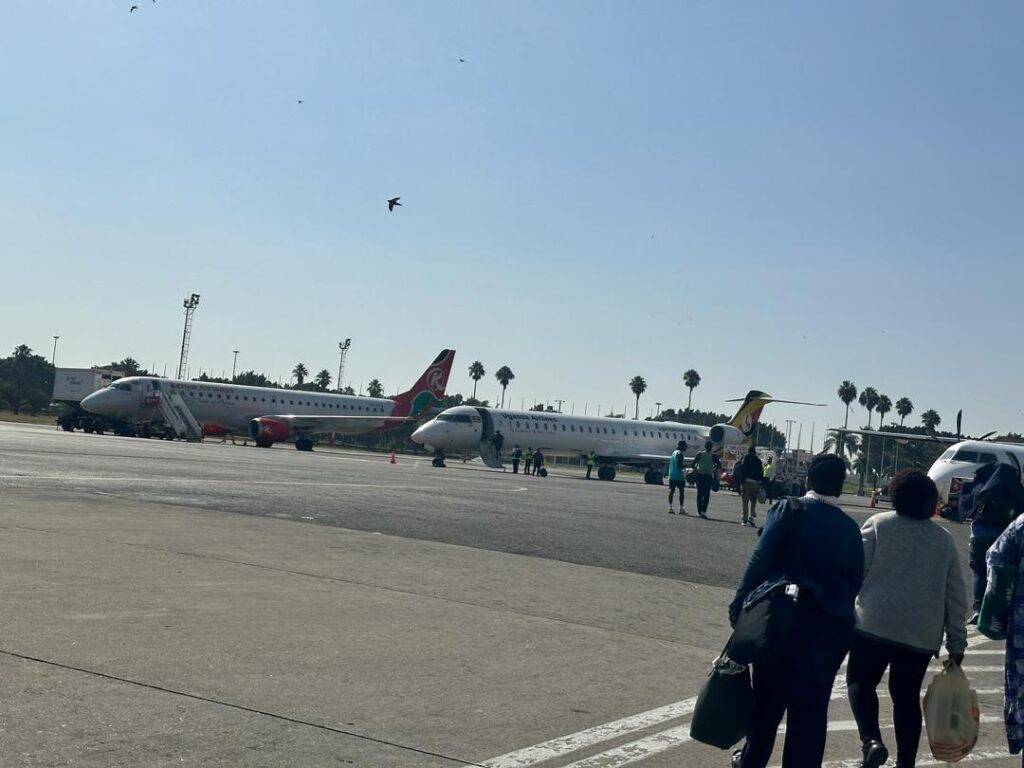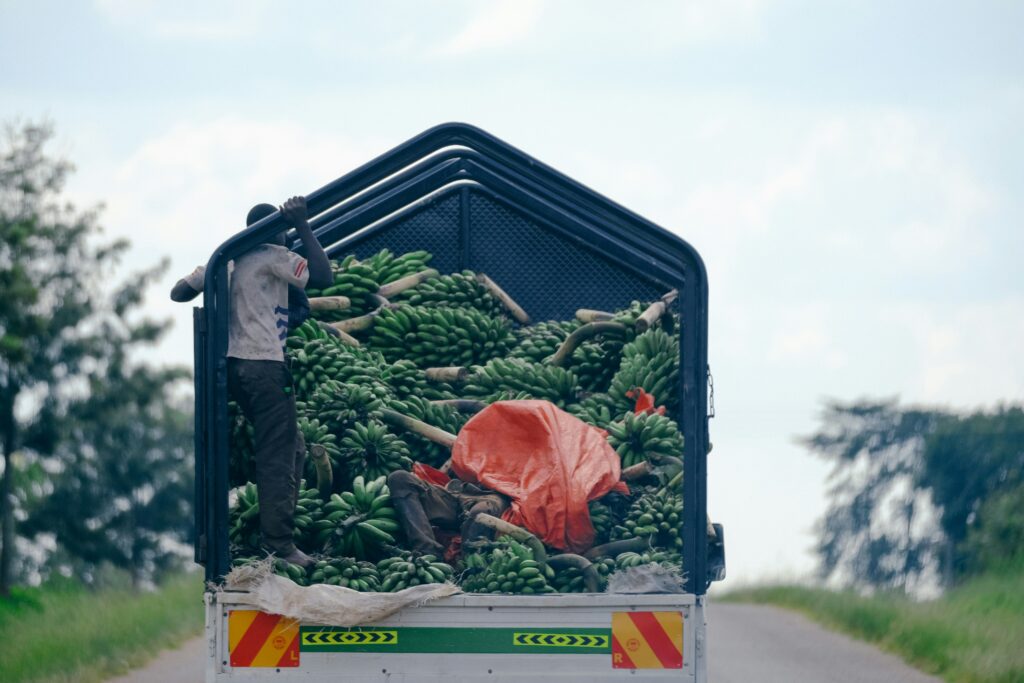Our theme at Ortega Group for the month of April 2024 is ‘Learning Supply Chains.’ It is about helping organizations in Uganda to unlock a competitive advantage through their supply chains. Thus, for the whole of April 2024, we shall be sharing a series of articles aimed at those in the supply chain functions, those whose businesses are heavily dependent on supply chains (every business is) and those seeking an opportunity to address challenges in this area.
Consider this as the first of many articles under this series. To start off, we shall set some context around logistics or supply chains. To state it simply, logistics is the act of getting a product or service from the point of origin (production) to the point of consumption. Over time, logistics, transport, distribution, and supply chain tend to be used interchangeably. And depending on one’s industry or category, they could mean different things in different contexts. But we shall stick to the objective of logistics: that ability to fulfil the 5 or 7 rights. Getting the product or service form point of origin to point of consumption in the right place at the right time in the right quantity at the right quality at the right price.
The Case for Logistics-Focus
Why should business leaders or future leaders focus on Logistics? Today, Logistics costs account for about 18 to 20 percent of the sale price of goods in Uganda. Due to logistical inefficiencies, Uganda loses about UGX 3.1 trillion annually (Kasemiire, 2021). The case is not any different for agricultural exports where transport costs account for up to 60 percent of the cost of production. Thus, the objective of any supply chain should be to find ways of profit maximization while minimizing cost to unlock value.
But let’s also make some distinctions for those who could be lost on distribution, logistics and supply chain.
Logistics = Transport + Inventory + Warehousing
Also
Logistics = Materials Management (inventory and warehousing) + Distribution
Supply Chain = Suppliers + Logistics + Customers
Thus, Supply Chain was an attempt to also integrate the inbound side of logistics, the component of one’s suppliers. As one thinks about logistics, one should always think about both the physical flows and information flows. Often, people tend to only think about the physical flow of products or services. Yet as the world increasingly becomes data-driven, the information flow and storage of that information forms the most critical component of any supply chain.
For organizations with a reverse logistics component, they must even think harder about it. What is the flow of used products and returnable packaging back into the system? Think of the logistics system as a pipeline through which value (product/service/information) flows. You want to aim for smooth flows, no blockages, and no leakages. Reverse logistics implies that you get to flow back into the same pipeline.
As one thinks of logistics costs, they should be thought of along the lines of Transport (accounts 47%), Inventory Carrying Cost (24%), Storage/Warehousing (21%), Customer Service/Order Entry (4%) and Administration (3%). We advocate for thinking about these categories to have an integrated thought process and approach to logistics. We have witnessed in the past that an improvement in storage or warehousing could have a downside in inventory carrying cost. Thus, as one thinks of logistics, it should be approached with a whole mindset, a total logistics overview. One should always look at the whole system and review the overall effect of any sub-optimization.
Trade-offs and Decisions in Logistics
What does this then imply? That all decisions in this pipeline come with trade-offs. The concept of opportunity cost is even more alive in all logistical decisions. There are several trade-offs to be made and these include:
- Tradeoffs within logistics components:
For example, random storage locations in a warehouse could give one a space utilization advantage yet could impact efficient picking and processing of orders (an advantage of fixed storage locations).
- Tradeoffs between logistics components
Again, the choice between introducing racks in a warehouse could also imply changing the goods handling technology. Instead of a forklift, one could have to shift to a reach truck.
- Between Company functions
If one runs a production line, the goal would be to have longer runs. These result in lower unit costs of production, as there’s better utilization of utilities, limited change overs and better efficiencies. However, this usually results in problems downstream with associated warehousing costs of storing the finished product. Here, a trade-off must be made.
- Trade-off between Company and External Organizations
Organizations must make trade-offs such as having a third party handle their logistics. And even then, should the 3rd party also own the trucks. How far should everything be outsourced?
The message here is that all decisions must be seen from the angle of their second, third and fourth order effects. Every decision could have a positive effect on finance yet disastrous effects in production or distribution or marketing. Should one do longer production runs? Should the company have fewer depots? Should stocks of finished products be reduced? Should raw material and component stocks be reduced? What about manpower in the warehouse?

Planning for Logistics
Thus, all logistical planning should be addressed through the 3-time horizons. That is the strategic (one year and above decisions), Tactical/Process (6 months to one year), and operation (the day-to-day activities). Organizations should not only plan to do the right thing (efficiency), but they should also control and do the thing the right way (effectiveness).
At a strategic level, decisions such as the customer service approach, the channels of distribution, reverse logistics, and third party or own account should be made. At the tactical level, direction should be taken on primary routes, monitoring procedures, vehicle types, unit loads, design and layouts of storage spaces to mention but a few. At an operational level, it’s important to consider the order picking, the executional elements of the strategic and tactical plans.
This process is fulfilled through an integrated planning and control cycle. This should start off with auditing where the status of the logistics operation. It should progress to defining the objectives. What kind of customer service do you wish to offer with your logistics? Next is to establish how that will be done? Strategically, tactically, and operationally. Failure to articulate the how on these three-levels recipates disaster. Finally, at the end of the planning and control cycle, there should be a method for monitoring and controlling.
Competitive Strategy and Logistics
The goal of any logistical operation is a perfect order. This has been defined by many as an order that’s on-time, in full and with no error. It’s the concept of OTIFNE.
There are two ways that logistics impacts the financials of an organization. The first way is directly through the profit. Better distribution will always result in better sales. Great order fulfilment also impacts re-ordering. On the other hand, also, a more efficient logistics operations implies less transport costs and thus ability to price products better.
The second way is through capital employed. Inventory ties up cash and so does the fixed costs of the warehousing locations. Thus, organizations can have better returns on investment through the maximization of profit in their logistics operations and the minimization of costs.
Based on this, there’s also ways to gain competitive advantage through one’s logistics:
First, the logistics operations can be strategically positioned for cost-leadership. That is to ensure that all costs are driven out across the chain to enable the organization to compete in the market as a cost-leader.
The alternative is that of a Service Leader/Differentiator. Here, the goal of the logistics operation is to maximize differentiation, to use it to distinguish the company from its competitors in the market. Imagine an organization doing drone deliveries or personalized deliveries.
The lesson here is one can’t do both with their logistics. One must choose a position between cost leadership and service leadership. This brings us to the next stage of having a customer service strategy. Because all decisions in logistics are about the kind of customer service one hopes to deliver versus the cost of delivering that service.
The Future of Customer Service
Although several organizations have created clear customer service functions, the role of customer service in logistics is still under-defined. Organizations must clearly define their customer and define what kind of service they wish to offer that customer.
Service should be defined along the lines of time (how fast do you wish to fulfil the order), dependability (how reliable will you be), communications (how efficient will this be), and flexibility (do you give the customer room to change). Customer service simply extends the five rights of logistics to seven rights. It’s about the Right Quantity, Right Cost, Right Product, Right Customer, Right Time, Right Place and Right Condition. The customer service should be conceptualized pre-transaction, during transaction and post-transaction. With the current progress in the world, there’s increased customer expectations. And service quality is thus the perceived performance by the customer as a percentage of the Desired expectation by the customer. Organizations once they’ve set their customer service strategy should have ways of measuring customer service. Common ways are through order fulfilment and order cycle time all resulting into the perfect order (OTIFNE).
Channels of Distribution
Ideally, once one has crafted their customer service strategy, it will also dictate possible choices when it comes to channels. Organizations must be intentional about their physical distribution channel and the transaction/trading channel. Channel is basically the platform or model one uses to reach the customer.
Do you reach the customer directly? Is it through distributors? Do those distributors also reach the customer directly? Or they also go through another intermediary. In recent times, 3rd party logistics and 4th party logistics have taken precedence.
Above all, as one selects the channels of distribution, they should keep abreast with the objectives they wish to achieve with the channel. Sales differ depending on the choice of channel. Some channels are long, and some are short. Also depending on one’s product, it could detect the type of channel to be used. Food logistics for example requires short and direct channels. Channels also dictate the speed and accuracy of feedback and information.
Key Issues and Challenges Facing the Logistics and Supply Chain in Uganda
Early in the year, Ortega Group shared a 2024 outlook for the Supply Chain in Uganda. This is an extension of trends to watch for those involved in supply chains.
It’s important to watch the External Environment. There are numerous changes in legislation. For example, will Uganda get the license to import fuel from Kenya? The integration of the East African community should be watched, while also making note of the security threats around borders. Externally, the global supply chains continue to suffer volatility (war in Ukraine, the Houthi rebels) and other potential evolutions. Environmental concerns continue to top as supply chains are being asked to decarbonize their operations.

On the supply agenda, the following issues will continue to feature:
- Demand Variability (forecasting) (customers have become more unpredictable)
- Inventory Management (Is Just-In-Time feasible in times of volatility?)
- Cost containment and reduction
- Supply chain visibility (information flow in the chain)
- New product introduction (different products require different distribution chains)
- Transport and logistics (costs of fuel, trucks)
- Rising complexity of global business
- Escalating customer requirements
- Integration with global partners
- Talent management (more talent migrations, possible talent gaps)
- Economic and financial volatility (forex in Uganda, interest rates, inflation)
- Globalization of supply chains
- Supply chain leadership
- Risk and disruption management (are you ready for the next pandemic)
- Global sourcing
- Compliance (supply chain fraud, governance)
- Managing product innovation
In the angle of Manufacturing and Supply, one should begin to see the evolution of Ugandan supply chains with the incorporation of Generative AI. The danger here is in moving too fast or too slow. But better to err on the side of moving too fast. Agile manufacturing is taking on more popularity than lean manufacturing. New technologies continue to hit the market such as 3D printing. There’s also a shift to focused factories and focused warehousing.
In the Logistics and Distribution side, the increasing agenda of 4th party logistics. However, many organizations with 3PL are yet to completely unlock the value from 3PL. 4PL should thus be approached with caution. There’s the changing role of the warehouses and distribution centres. RFID tagging is also taking centre stage.
Finally, the Retailing Side and the Consumer should also be watched. The Retailer is evolving, some retailers are also evolving into manufacturers or distributors. The consumer is also evolving and increasingly becoming majorly digital. All these have implications for supply chain decisions and developments.
In our Part 2 of this series, we shall look at Planning Frameworks for the logistics operations.

